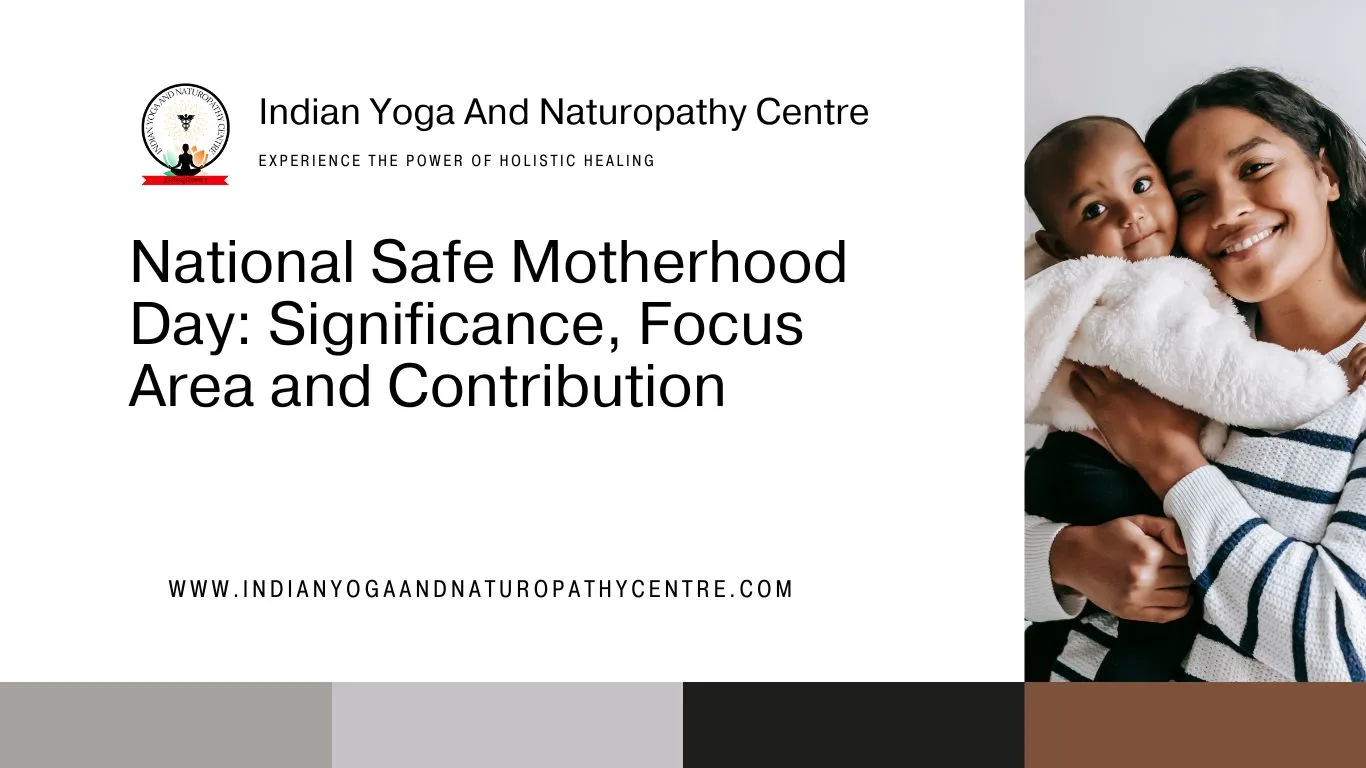Every year on April 11th, we celebrate National Safe Motherhood Day to raise awareness about the importance of maternal health1 and ensure the well-being of mothers around the world. This day serves as a reminder of the challenges women face during pregnancy2, childbirth3, and postpartum4, and highlights the need for accessible and quality healthcare for all mothers.

The Significance of National Safe Motherhood Day
Maternal health is a crucial aspect of overall public health. Unfortunately, many women still face significant health risks during pregnancy and childbirth, especially in developing countries. National Safe Motherhood Day aims to address these challenges and promote safe and healthy motherhood experiences.
The day also serves as a tribute to Kasturba Gandhi Ji, the wife of Mahatma Gandhi Ji, who played a pivotal role in promoting maternal health and safe childbirth in India. Kasturba Gandhi Ji’s efforts continue to inspire individuals and organizations to work towards improving maternal health and reducing maternal mortality rates5.
Ensuring Safe Motherhood: Key Focus Areas
On National Safe Motherhood Day, it is essential to highlight the key focus areas that contribute to safe and healthy motherhood:
1. Access to Quality Healthcare
Access to quality healthcare is crucial for ensuring safe motherhood. It includes regular prenatal6 check-ups, skilled birth attendants, emergency obstetric7 care, and postnatal8 care. Efforts should be made to improve healthcare infrastructure, especially in rural and remote areas, to provide equitable access to healthcare services for all pregnant women.
2. Maternal Education and Empowerment
Education and empowerment play a vital role in promoting safe motherhood. Women should be educated about the importance of antenatal care, nutrition, hygiene, and family planning. Empowering women with knowledge and decision-making abilities enables them to make informed choices regarding their health and the health of their children.
3. Addressing Socioeconomic Factors
Socioeconomic factors such as poverty, lack of education, and gender inequality significantly impact maternal health. Efforts should be made to address these factors by providing economic support, promoting education, and empowering women. Additionally, addressing cultural practices that may pose risks to maternal health is crucial.
4. Maternal Mental Health
Maternal mental health is often overlooked but plays a significant role in the overall well-being of mothers. Postpartum depression and anxiety can have long-lasting effects on both the mother and the child. National Safe Motherhood Day serves as an opportunity to raise awareness about the importance of mental health support for mothers and advocate for accessible mental health services.
How You Can Contribute
As individuals, we can contribute to promoting safe motherhood in various ways:
1. Spread Awareness
Spread awareness about National Safe Motherhood Day and its significance through social media, community events, or educational campaigns. Use your platform to educate others about the challenges faced by mothers and the importance of safe motherhood practices.

2. Support Maternal Health Organizations
Consider supporting organizations that work towards improving maternal health and providing healthcare services to pregnant women in need. Donating funds, volunteering, or participating in fundraising events can make a significant impact on the lives of mothers and their children.
3. Educate Yourself and Others
Take the time to educate yourself about maternal health and the challenges faced by mothers worldwide. Share this knowledge with others to raise awareness and promote understanding of the importance of safe motherhood practices.
Conclusion
National Safe Motherhood Day serves as a reminder of the ongoing efforts required to ensure the health and well-being of mothers. By focusing on access to quality healthcare, maternal education and empowerment, addressing socioeconomic factors, and supporting maternal mental health, we can contribute to creating a safer and healthier environment for mothers and their children. Let us join hands to celebrate National Safe Motherhood Day and work towards a future where every mother can experience a safe and joyful motherhood journey.
- Maternal health refers to the health of women during pregnancy, childbirth and the postnatal period. ↩︎
- Pregnancy is the term used to describe the period in which a fetus develops inside a woman’s womb or uterus. ↩︎
- the act of giving birth to a baby ↩︎
- The postpartum period begins after childbirth and is typically considered to last for six weeks. ↩︎
- Mortality rate, or death rate, is a measure of the number of deaths in a particular population, scaled to the size of that population, per unit of time. ↩︎
- before birth ↩︎
- Obstetrics is the field of study concentrated on pregnancy, childbirth and the postpartum period. ↩︎
- relating to or denoting the period after childbirth. ↩︎








































































Was it Helpful ?